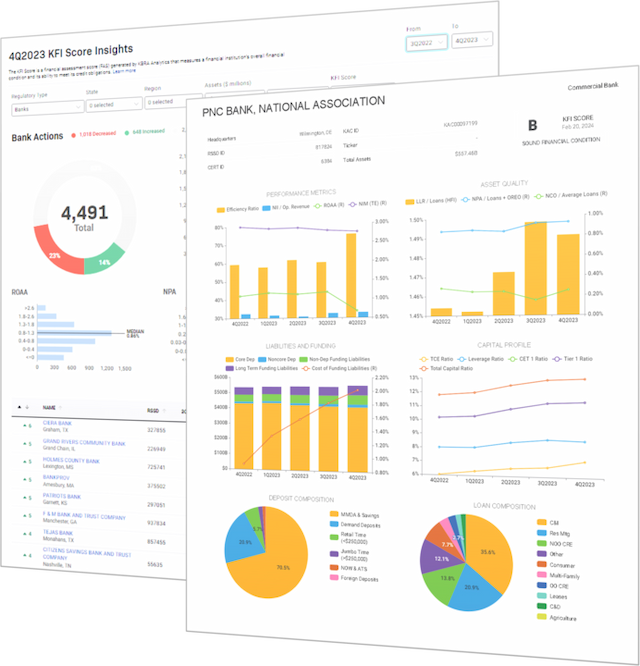KBRA Financial Intelligence
Farm Lending Growth Slows Amid Federal Subsidy Surge
By KFI Staff
Farm Subsidies Quadruple Amid Stifling Jump in Costs
Recent revisions to U.S. Department of Agriculture (USDA) data boosted the projected annual increase farm earnings to 40% for 2025. That is up from a 29% gain that KBRA Financial Intelligence (KFI) highlighted back in March. Though this seems hugely positive at first glance, the wider gain is mostly related to a watering down of 2024’s net farm income to $127.8 billion from $139.1 billion.

Though farm expenses had been projected to decline slightly from 2024, recent revisions show 2025 expenses are now expected to climb more than 2.6%. Due to a persistent downtrend across many categories of crop and livestock prices throughout the past several years, farmers’ costs have generally increased more quickly than their income for several years. Since 2022, expenses have surged 7.3%, whereas total gross farm income has increased by a narrower 4.8%. If you exclude the federal government’s direct farm program payments from the equation, annual gross farm income has risen only 0.8% throughout that span.
Federal payments to farms narrowed significantly in recent years, totaling just $10.1 billion (or less than 1.8% of gross cash farm income) last year. However, a surge of funding tied to disaster relief funding provided under the American Relief Act of 2025 will help to supercharge 2025 federal payments to $40.5 billion. That equates to 6.5% of all gross cash farm income and is responsible for the majority of 2025’s increase in net farm income over the previous year.
Agricultural Loan Growth Stumbles to Near Four-Year Low
While the imbalance in nongovernment-related farm income and expenses can be tied to the U.S.’s elevated inflation throughout the past several years—impacting prices of equipment, fertilizer, and other key farm expense inputs—increasingly burdensome financing costs may be playing some role in exacerbating cost pressures farmers were already feeling.

As crop prices fell throughout most of 2023 and 2024, U.S. farms were loading up on bank loans to finance agricultural production. Commercial real estate (CRE) loans secured by farmland also spiked, with each of those categories outpacing the growth of total bank lending on an annual basis from 2Q 2023-2Q 2024. This implies that, while rising interest rates were subduing the expansion of credit in other lending categories, demand for agricultural loans was strengthening.
USDA data shows that the buildup in farm debt will push annual U.S. farm interest expenses to more than $32.5 billion this year, from under $19 billion in 2021. That 71% increase marks the largest four-year increase in farms’ interest payments in over 40 years. Though the jump in interest generated moderate increases in farms’ debt service and debt-to-equity ratios in 2023-24, agricultural loans have generally experienced relatively low rates of delinquency throughout the past few years. Federal Financial Institutions Examination Council (FFIEC) call report data shows that delinquency rates related to agricultural production and CRE farmland loans each remain below pre-pandemic levels and trail the rate of delinquency impacting total bank loans.

The year-over-year gain in agricultural lending was reported at just 2% in 2Q 2025, the weakest rate of growth recorded since 3Q 2021. KFI posited last March that we may see a hastened slowdown in agricultural lending given the quadrupling of annual federal payments to farmers, policy changes establishing new deferment and low-interest opportunities for distressed farm borrowers, and options for extended loan terms, interest-only payments, and reduced collateral requirements. Despite record yields projected for crops like corn and soybeans in 2025, growth in both agricultural production and CRE farmland lending are now trailing total loan growth, each reaching multiyear lows.
